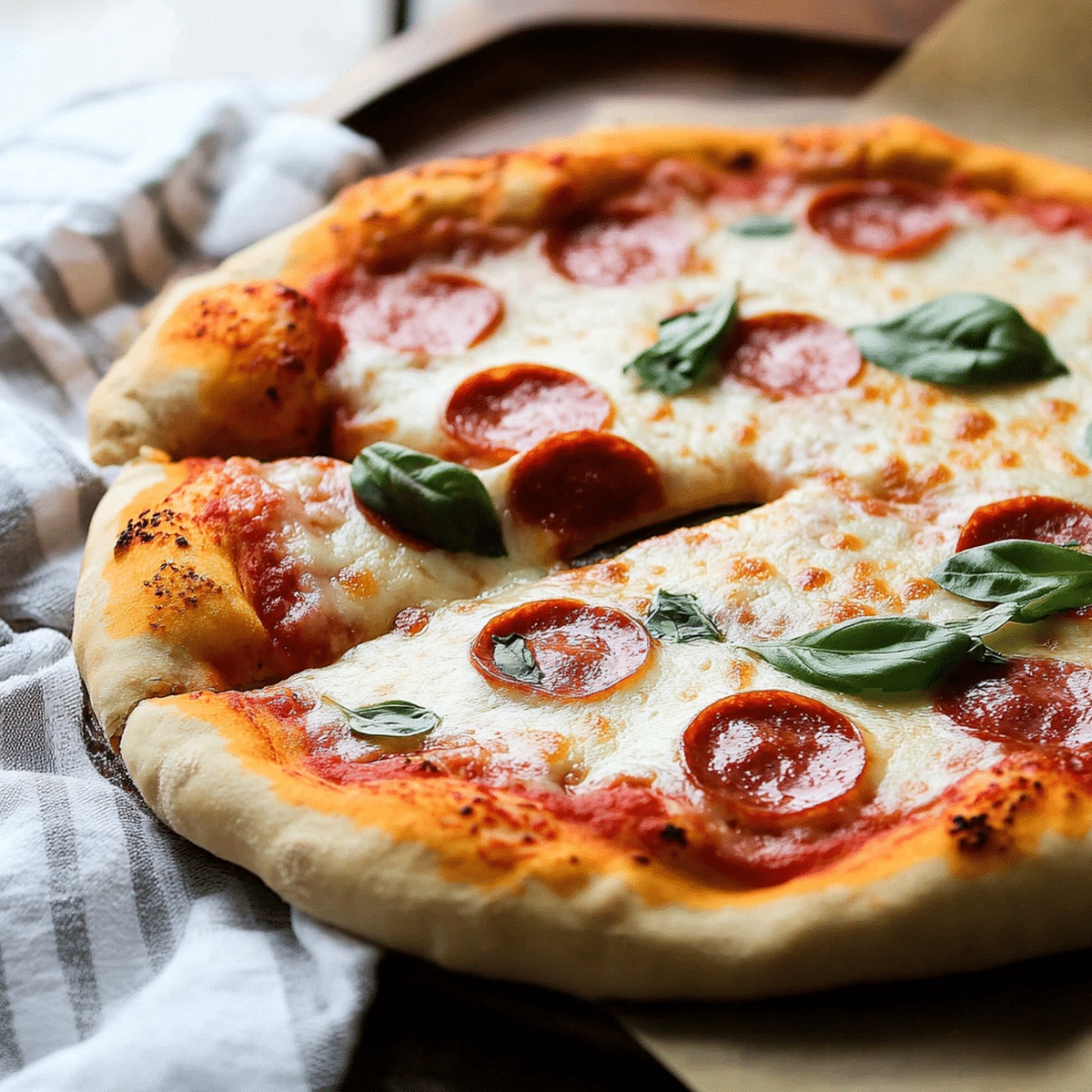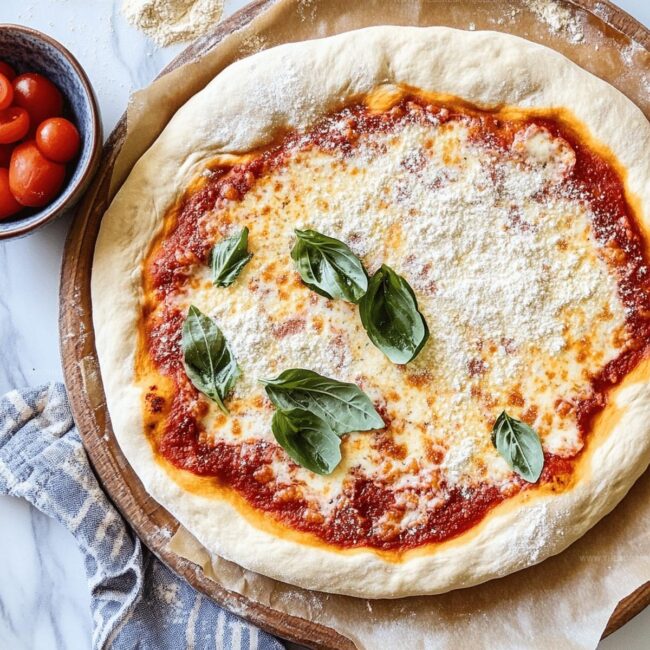Super Fluffy Homemade Pizza Dough Recipe – Foolproof & Fun
Crafting homemade pizza dough brings an incredible sense of culinary satisfaction and personal achievement.
Kneading soft flour and watching ingredients transform feels magical in your kitchen.
Professional chefs and home cooks share a secret: making dough from scratch isn’t complicated.
Simple ingredients like flour, yeast, and water create something extraordinary with minimal effort.
Salt and olive oil add depth to the mixture, enhancing flavor profiles dramatically.
Each stretch and fold builds anticipation for the delicious pizza waiting to emerge.
You’ll feel like a true artisan as delectable aromas fill your home, promising a memorable meal ahead.
Why Pizza Dough Is the Foundation of Great Pizza
Ingredients for Homemade Pizza Dough
Dry Ingredients:Wet Ingredients:Preparation Ingredients:How to Make Pizza Dough from Scratch
Step 1: Blend Dry Ingredients
Mix bread flour, sugar, salt, and instant dry yeast together in a spacious mixing bowl.
Ensure all dry components are evenly distributed by stirring with a whisk or wooden spoon.
Step 2: Create Dough Mixture
Pour warm water into the dry ingredient blend and stir continuously until a shaggy dough starts forming.
The mixture will gradually transform from loose ingredients to a cohesive mass.
Step 3: Knead Dough Thoroughly
Transfer the dough onto a clean, lightly floured surface.
Using the heel of your palm, push and fold the dough repeatedly.
Continue kneading for approximately 10 minutes until the texture becomes smooth, springy, and elastic.
Step 4: Allow First Rise
Place the kneaded dough into a lightly greased bowl.
Cover the bowl with a damp kitchen towel or plastic wrap.
Let the dough rest in a warm, draft-free area for 1-2 hours until it doubles in volume.
Step 5: Prepare Pizza Base
Gently deflate the risen dough by pressing down with your fist.
Shape the dough into a circular or rectangular pizza crust on a baking sheet or pizza stone.
Step 6: Add Toppings and Bake
Preheat the oven to the recommended temperature.
Spread your favorite sauce, sprinkle cheese, and add desired toppings.
Bake until the crust turns golden brown and toppings are perfectly cooked.
Tips for Perfect Pizza Dough
Variations for Pizza Dough to Try
Serving Suggestions Using Pizza Dough
How to Store Pizza Dough Properly
FAQs
Bread flour is recommended because it has higher protein content, which creates more gluten and gives the pizza dough a chewier, more elastic texture compared to all-purpose flour.
Check the expiration date and test by dissolving yeast in warm water with a pinch of sugar. If it becomes foamy and bubbly within 5-10 minutes, the yeast is still good and ready to use.
Kneading develops gluten, which gives the pizza dough its stretchy and smooth texture. Proper kneading ensures better rise, lighter crust, and improved overall pizza dough quality.
Print
Pizza Dough Recipe
- Total Time: 40 minutes
- Yield: 2 1x
Description
Homemade pizza dough creates magic in kitchens worldwide, bringing authentic Italian flavors right to your countertop. Kneading this simple blend of flour, yeast, and water promises delicious possibilities you’ll savor with each crispy, golden slice.
Ingredients
Main Ingredients:
- 2.5 cups (300 g / 10.5 ounces) bread flour, sifted
- 3/4 cup plus 1 tablespoon (195 milliliters) warm water
Leavening and Seasoning:
- 1 teaspoon instant dry yeast
- 1 teaspoon salt
- 1 teaspoon granulated sugar
Finishing Ingredient:
- Olive oil for greasing
Instructions
- Blend bread flour, sugar, salt, and instant dry yeast in a spacious mixing vessel, ensuring even distribution of dry ingredients.
- Pour lukewarm water gradually into the flour mixture, stirring consistently until a cohesive dough mass emerges.
- Transfer dough onto a lightly dusted work surface and vigorously manipulate for approximately 10 minutes, developing a silky, resilient texture.
- Coat a clean bowl with olive oil, nestle the dough inside, and drape with a moistened kitchen towel to prevent surface drying.
- Allow dough to rest and expand in a warm environment for 60-120 minutes, watching for volume to approximately double.
- Deflate the risen dough by pressing firmly with closed fists, releasing trapped gases and redistributing yeast.
- Gently stretch and shape the dough into a circular or rectangular foundation, maintaining an even thickness across the surface.
- Prepare the oven by preheating to 450-475°F, creating an ideal baking environment for a crisp, golden crust.
- Layer selected toppings across the prepared dough, ensuring balanced coverage and leaving a small border around the edges.
Notes
- Opt for high-protein bread flour to achieve a chewy, sturdy pizza base that holds toppings perfectly.
- Warm water activates yeast effectively, but ensure it’s not too hot, which can kill the yeast and prevent rising.
- Knead the dough thoroughly to develop gluten, creating that classic stretchy texture pizza lovers crave.
- Let the dough rise in a warm, draft-free spot to help it double in size and develop rich, complex flavors.
- Prep Time: 20 minutes
- Cook Time: 20 minutes
- Category: Lunch, Dinner, Appetizer, Snacks
- Method: Baking
- Cuisine: Italian
Nutrition
- Serving Size: 2
- Calories: 265 kcal
- Sugar: 2 g
- Sodium: 600 mg
- Fat: 1 g
- Saturated Fat: 0.1 g
- Unsaturated Fat: 0.9 g
- Trans Fat: 0 g
- Carbohydrates: 55 g
- Fiber: 2 g
- Protein: 8 g
- Cholesterol: 0 mg





Lucas Bennett
Founder & Recipe Developer
Expertise
Education
Blue Ridge Community College – Certificate in Culinary Arts
Focused on seasonal cooking, sustainable kitchen practices, and farm-to-table techniques.
Appalachian State University – B.A. in English
Built critical thinking and analysis through diverse texts. Guided by faculty, it prepares graduates for publishing and more.
Growing up in the rolling hills of North Carolina, Lucas learned early that some of life’s best memories start around a kitchen table. After studying English at Appalachian State University and honing his culinary skills at Blue Ridge Community College, he dreamed of blending storytelling with rustic, seasonal cooking, and The Scrumptious Pumpkin was born.
Lucas focuses on easy, single-serving recipes that turn fresh, local ingredients into something special. His style is simple, heartfelt, and rooted in the beauty of the seasons. When he’s not testing a new dish, you’ll probably find him hiking in the Blue Ridge Mountains, browsing farmers’ markets, or scribbling food stories in a notebook.